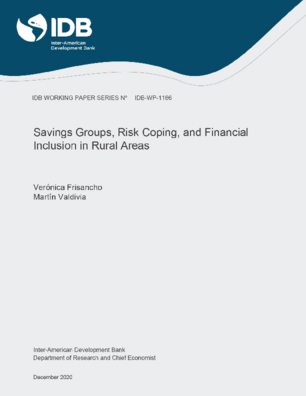Savings Groups, Risk Coping, and Financial Inclusion in Rural Areas
Date
Dec 2020
Summary
This paper evaluates the impact of the introduction of savings groups on poverty, vulnerability, and financial inclusion outcomes in rural Peru. Using a cluster randomized control trial and relying on both survey and administrative records, we investigate the impact of savings groups after more than two years of exposure. We find t hat savings groups channel expensive investments such as housing improvements and reduce households' vulnerability to idiosyncratic shocks, particularly among households in poorer districts. The treatment also induces changes in households labor allocation choices: access to savings groups increases female labor market participation and, in poorer areas, it fosters greater specialization in agricultural activities. Access to savings groups also leads to a four-percentage point increase in access to credit among women, mainly driven by access to the groups loans. However, the introduction of savings groups has no impact on the likelihood of using formal financial services.On the contrary, it discourages access to loans from formal financial institutions and microfinance lenders among the unbanked.




